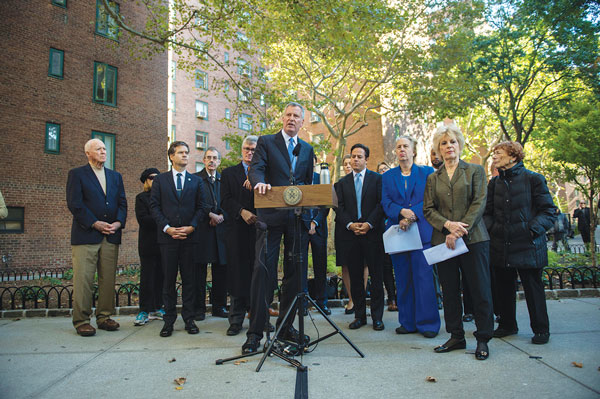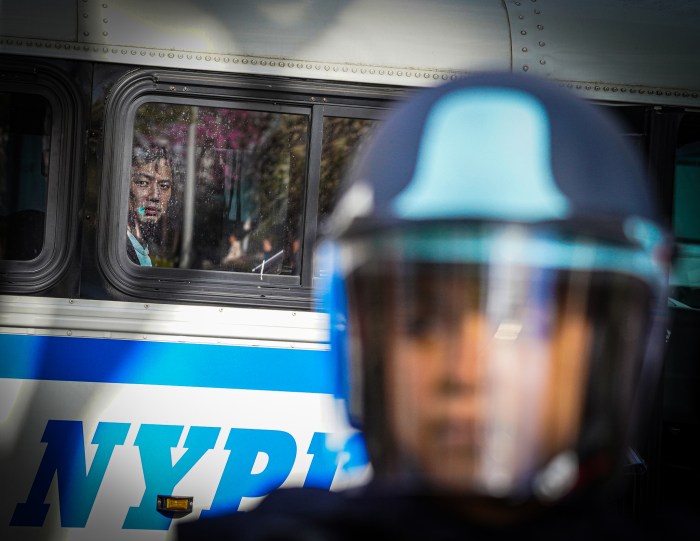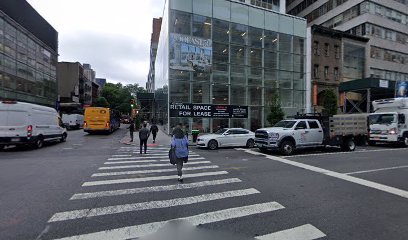
BY YANNIC RACK | It didn’t take long for the much-heralded multibillion-dollar sale of Stuyvesant Town and Peter Cooper Village to raise some official eyebrows.
Comptroller Scott Stringer and other local politicians are already probing the “sweetener” of the deal — the right to sell off the unused air rights of Manhattan’s largest apartment complex — days after it was announced that the Blackstone Group is paying $5.4 billion for the more than 11,000 units spread out across 80 acres east of First Ave., between 14th and 23rd Sts.
“The deal outlined earlier this week is a positive step toward preserving affordable housing at ST/PCV and we are glad that Blackstone has made a firm public commitment not to build on any of the open space in the complex,” read a joint letter by local politicians sent to Jonathan Gray, Blackstone’s global head of real estate, on Mon., Oct 26.
“However, we must express our concern regarding your intention to pursue transferring air rights from ST/PCV to the surrounding communities. This component of the agreement has not been disclosed in any detailed way either in the public documents or in our conversations about the deal.”
The letter, signed by Stringer, Congressmember Carolyn Maloney, state Senator Brad Hoylman and Assemblymember Brian Kavanagh, seeks clarification on the actual amount of air rights at stake in the sale, which they warned could have a staggering impact on the area’s infrastructure.
It was widely reported in the media that only 700,000 square feet of air rights are available on the site. But the officials note that Department of City Planning data show the unused air rights on the two massive superblocks could amount to more than 10 million square feet when community facility uses are included.
“New York’s communities are keenly aware of the potential impacts associated with air rights, and any plan to radically change the zoning of a large parcel of land must include the community’s voice,” the pols demanded in their letter.
Air rights usually have to be sold to a project in the immediate vicinity (though the allowable distance of the transfer can be stretched through creation of special zoning districts), but the letter notes there are few neighboring developments that would qualify.
Although the parties will officially close the deal at the end of the month, the officials requested that the details be discussed with the complex’s residents before the agreement is finalized.
In a response to Stringer and the other officials on Tues., Oct. 27, Blackstone did not address the amount of air rights involved, but said that currently the company has no plans to transfer them anywhere.
“We indicated our willingness to commit not to build and to maintain the important open spaces in the complex, and we simply asked for the city’s support if we sought to transfer air rights to another site,” the letter, signed by Gray, read.
Gray added that Blackstone was aware that any such air-rights sale plans would require a full ULURP (Uniform Land Use Review Procedure) public review, including votes by the affected community boards, borough president and City Council, and that the company would “come and discuss with you in detail at that time.”
Susan Steinberg, president of the Stuyvesant Town-Peter Cooper Village Tenants Association, said that most of the residents felt relief at the sale, and that worrying about the air rights was jumping the gun at this point.
“I personally am not worried about it,” she said. “My impression is that there’s a lot of worry going on very early in the game.”
She also emphasized the requirement of a ULURP in the case of any future plans by the new owner to sell air rights.
“They can’t just willy-nilly go and transfer their air rights without a lot of weighing in by a lot of people,” she said.
Local officials initially praised the sale at an announcement on Oct. 20 at Stuyvesant Town, where City Councilmember Dan Garodnick, himself a resident of Peter Cooper Village, said that the tenants at the complex had found “a true partner” in Blackstone.
Under the deal, Blackstone and partner Ivanhoé Cambridge (the real estate arm of a Canadian pension fund manager) pledged to keep 5,000 apartments — just under half of the units — affordable to middle-class families for at least the next 20 years. Many of the remaining apartments are already at or above market rate, according to the tenants association, which welcomed the deal in a press release.
Blackstone also agreed to cap annual rents for roughly 1,400 so-called “Roberts” units, named after a 2009 court settlement that awarded damages to tenants whose apartments had been illegally deregulated. Rent increases on those units will now be capped at 5 percent per year over a five-year period once the J-51 tax abatement expires in 2020, at which point they would have otherwise been subject to high rent increases.
Blackstone representatives attended a meeting for residents of the complex at Baruch College on Sat., Oct. 24, where Mayor Bill de Blasio and Senator Chuck Schumer, as well as a range of local politicians, praised the deal before opening the floor to public comments and questions.
“There had been a lot of uncertainty before the public meeting on Saturday,” Steinberg said. “But they clearly said that they were not interested in evicting people, so I think tenants are feeling a huge sigh of relief.”
But even though Blackstone has been responsive, additionally setting up a dedicated hotline and Web site on which residents can submit questions, some remained wary.
“They were basically just congratulating each other on what a great job they’ve done,” one longtime resident, who declined to give his name, said of the politicians after the meeting.
He also said that the sale’s terms were so complex that many of his neighbors were struggling to wrap their heads around the fine print.
“I have an M.B.A. from N.Y.U. and I don’t understand all of this,” he said. “Why don’t they just make it crystal clear so that a layman can understand it?”
Other residents raised common complaints about noise, the complex’s student population and the management company tasked with the development’s daily maintenance, issues Blackstone pledged to look into.
“The company is extending its hand to tenants and we should meet that hand,” noted a post on the Stuyvesant Town Report blog after the meeting. “Of course we have to be vigilant, and the future may show that Blackstone’s currently stated attitude will dissipate. I hope not, for all of our sakes.”
Stuyvesant Town, a middle-class enclave since it was built in 1947, continues to be a home for nurses, teachers and firefighters. Residents over the past decade have fought owners’ attempts to turn the complex upscale by pushing out longtime tenants and raising rents.
CWCapital, the previous owner, decided not to entertain a bid from tenants who wanted to purchase the complex, and Steinberg said there were still some lingering hard feelings about that plan’s failure.
“Is this the ownership that we originally wanted? No,” she said. “But I think there was a combination of forces that meant it didn’t happen,” she said of the failed bid for tenant ownership.
“The mood is mostly very upbeat, people feel that at last they know where they’re going to be for the next 20 or so years. I think this outcome with Blackstone is as good as it gets.”

















